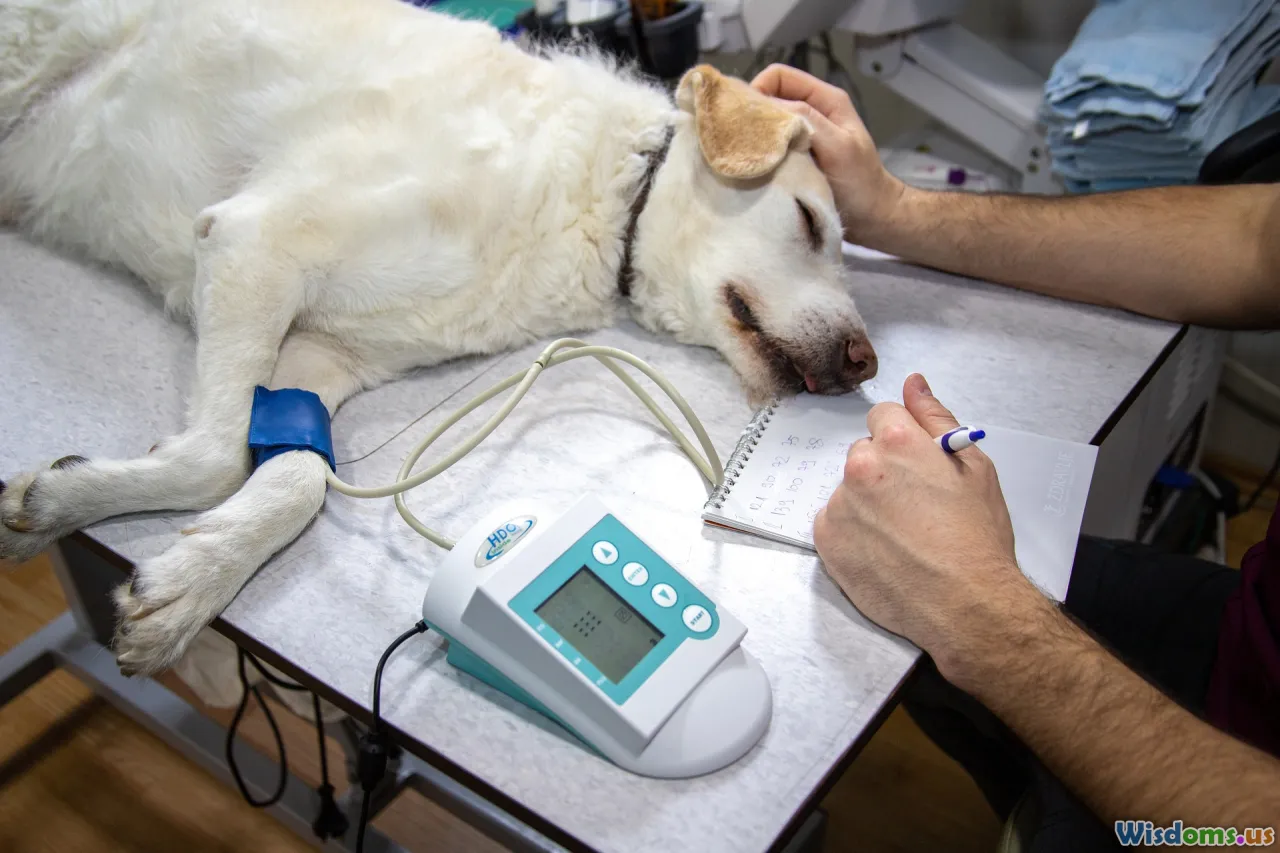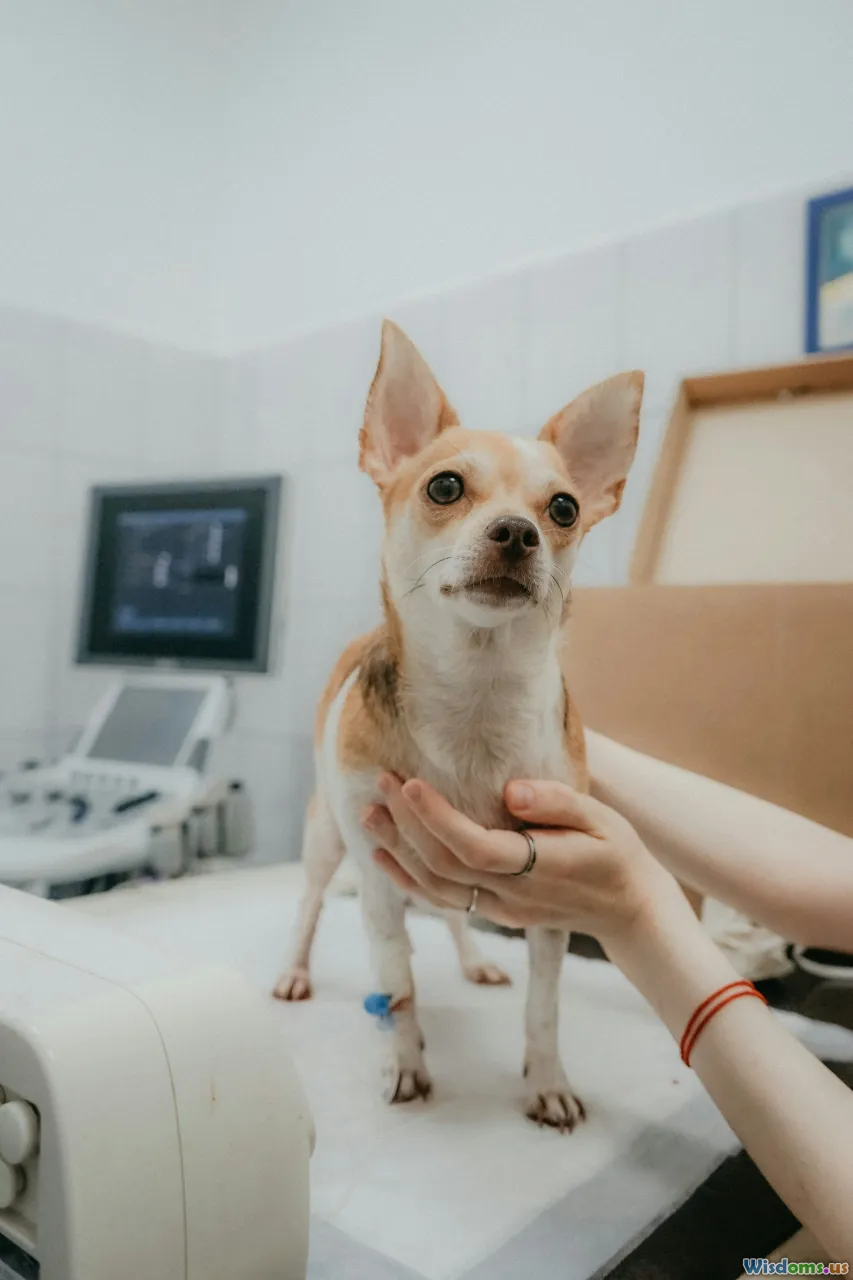
Can Pet Insurance Really Save You Money Long Term
14 min read Explore if pet insurance can actually save you money in the long run by analyzing real examples, coverage options, and potential savings versus common veterinary costs. (0 Reviews)
Can Pet Insurance Really Save You Money Long Term?
Pet lovers know the joy, companionship, and, occasionally, the stress that furry or feathered family members can bring. One growing trend among responsible pet parents is securing pet insurance. With rising veterinary expenses and unpredictable health worries, it’s wise to ask: can pet insurance actually save you money in the long run, or is it just another monthly expense? Let’s take a deep, factual look at the value of pet insurance across a pet's life, offering detail-rich analysis and actionable advice to empower your decision making.
A Landscape of Veterinary Costs

Acute injuries, chronic diseases, dental work, medications: caring for pets requires more than just food and treats. According to the American Pet Products Association, U.S. pet owners spent over $35 billion on veterinary care in 2023—a 10-year high. Routine check-ups may only set you back $50–$200, but emergency visits can rocket to $1,000 and beyond.
Real-World Example
Consider Bella, a two-year-old Labrador. She eats well, gets regular exercise, and has no history of illness. One morning, she becomes lethargic and refuses breakfast. After an urgent trip to the vet and a series of tests, Bella is diagnosed with pancreatitis. Between blood work, imaging, IV fluids, and overnight observation, the total bill reaches $2,000. That’s a tangible, unexpected financial hit—one faced by thousands of pet owners every year.
What Does Pet Insurance Really Cover?

A pet insurance policy can be widely varied in its protection. Generally, there are three main types:
- Accident-only policies: Cover injuries from accidents (fractures, toxins, cuts).
- Accident & illness policies: Also covers common illnesses, infections, hereditary problems, and more.
- Comprehensive or wellness plans: Includes preventive care (vaccinations and check-ups).
Most plans use a reimbursement model: you pay the vet, submit your bill, then receive a percentage back after the deductible. For example, with a $250 deductible and an 80% reimbursement rate, a $1,000 vet bill translates into $600 back, minus the $250 deductible.
Fact: By 2023, approximately 5 million U.S. pets were enrolled in pet insurance, up 22% from the year prior (North American Pet Health Insurance Association). This upward trend hints that, for many, the safety net seems worth the investment.
Analyzing Long-Term Savings: When Does Pet Insurance Make Financial Sense?

Breaking Down the Numbers
Let’s build a hypothetical example for "Whiskers," a mixed-breed rescue cat, to see what a long-term scenario looks like:
- Monthly premium: $40
- Annual deductible: $250
- Reimbursement rate: 80%
- Years insured: 10
Total Premiums Paid
$40 x 12 months x 10 years = $4,800 total in premiums.
Lifetime Veterinary Costs (excluding routine care)
According to AVMA surveys:
- Average emergency visit per cat: $800–$3,000
- Chronic illness (e.g., diabetes): Treatment may cost $1,000–$2,500 per year
- Dental extractions: $800–$1,500 per procedure
Suppose Whiskers experiences one $1,500 injury, one chronic kidney disease diagnosis at $1,000/year during years 7–10, and two dental extractions. That’s over $7,000 in unexpected medical costs—excluding vaccines and annual wellness checks.
Assuming all costs are covered per policy terms, with an $800 deductible (one per year), 80% back, the out-of-pocket is significantly reduced. Calculating quickly:
- You pay $4,800 in premiums
- Insurance reimburses roughly 80% of $7,000 (minus deductibles), so about $5,600
- Your 10-year savings: around $800 ($5,600 received reimbursement – $4,800 premiums). Plus, you avoid shocks of huge financial outlays.
Pet insurance isn’t always about being ‘profitable’ in a strict sense. The major selling point: smoothing out high, unpredictable costs in exchange for manageable monthly spending.
The Peace of Mind Factor: More Than Dollars and Cents

For many owners, pet insurance comes down to emotional rather than strictly financial considerations. Suddenly facing a vet’s tough recommendation—an $8,000 surgery or euthanasia—can be soul-crushing if finances are the only obstacle.
Studies show that insured pet owners are less likely to delay or deny care due to cost. That peace of mind is hard to quantify but incredibly valuable when a pet’s health is at stake. It allows for decisions to be made on the basis of what’s best for the animal, not just what’s affordable today.
Key Factors Affecting Coverage Value

Several factors determine if insurance will save you money—or create unneeded monthly expense:
- Pet’s age and breed: Older pets or breeds prone to specific health issues (think bulldogs, retrievers, certain cats) cost more to insure and are more likely to rack up claims.
- Policy exclusions: Pre-existing conditions, genetic disorders, or diseases that arise before the policy start date may not be covered.
- Deductibles and caps: Higher deductibles lower premiums but increase your per-incident costs; some policies have payout limits.
- Your risk tolerance: If you can comfortably afford a $3,000–$6,000 surprise, self-funding might make sense. Otherwise, insurance could be prudent.
Concrete Example
A client with a Cavalier King Charles Spaniel (a breed prone to heart disease) might pay $80/month for a comprehensive plan. This feels steep, but with the likelihood of mitral valve problems requiring surgery costing $6,000–$8,000, insurance is more likely to pay off.
Comparing Self-Insurance and Pet Insurance: Which Wins?

The "Saving on My Own" Route
Some pet owners eschew insurance, opting to set aside the equivalent of a premium ($40–$60/month) in a separate savings account for emergencies.
Upsides:
- Control over your money
- No policy exclusions
- Might end up with savings if your pet remains healthy
Downsides:
- Requires discipline—you must not touch the fund for non-emergencies
- Most serious incidents happen in the pet’s early or middle years—before savings have grown substantially (e.g., a 2-year-old cat gets an $1,800 bladder stone surgery one year into savings: you may only have $500 set aside)
- No negotiating power—veterinarians often request payment up front, while insurance helps you get reimbursed after
When Insurance Wins
If your pet suffers a major illness or accident early in life—a real possibility—insurance shields you from facing life-or-death decisions based solely on money. Conversely, if years pass without major claims, you might ultimately spend more in premiums than you receive back.
Pet Insurance Case Studies: Real Savings or Not?

Case Study 1: Max the Golden Retriever
Max’s owner paid $600/year for accident & illness coverage. At age 5, Max developed hip dysplasia, ultimately needing $7,500 in corrective surgeries and post-op therapy. In eight years of coverage, Max’s owners paid about $4,800 in premiums, with $6,000 reimbursed by the insurer. That’s a net savings of $1,200 (plus a manageable spread of payments).
Case Study 2: Luna the Indoor Cat
Luna, age 11, was healthy with no major illnesses. Her owner paid $450/year for a policy for 8 years—$3,600 total. A cancer diagnosis late in life meant $3,000 in treatments, 80% covered after a $250 deductible. Luna’s family received a $2,150 reimbursement, paying about $1,450 out-of-pocket with premiums. Here, insurance mitigated a large late-life cost, but in total costs, she spent $3,600 + $850 (unreimbursed amount) = $4,450 vs. $3,000 treated herself. For rarely-ill pets, insurance may be a ‘loss’ but offered vital cash-flow help during a crisis.
Choosing the Best Policy: Actionable Tips

-
Shop Around. Compare at least three companies. Key players include Trupanion, Healthy Paws, Nationwide, and Embrace, each with different inclusions/exclusions.
-
Read the Fine Print. Some policies don’t cover ongoing conditions or require supplemental riders. Know your breed’s needs and ask about hereditary/previously diagnosed issues.
-
Start Early. Premiums are lowest for young, healthy pets. Waiting until after diagnosis means exclusions or higher premiums.
-
Adjust Deductibles. Higher deductibles lower bills but increase your payment at claim time. Pick a deductible you can afford in a crisis.
-
Ask About Limits. Annual, per-incident, or lifetime caps can leave coverage short. Seek the highest limits your budget allows.
-
Leverage Employer Benefits. Some companies offer discounted pet insurance as an employee perk—check if you’re eligible.
-
Check Reviews and Claim Processing Speeds. Quick reimbursements matter in emergencies; a highly rated insurer can make a stressful experience easier.
Is Pet Insurance a Smart Investment for Most Owners?

Statistically, most pets visit the vet for unexpected health issues several times per life, often racking up bills into the thousands. For those with breeds at high risk for disease or adventurous animals prone to injury, insurance tilts the equation solidly in favor of long-term savings.
For others with low-risk pets, especially if willing to self-insure, it may simply provide budgetary discipline and peace of mind. Ultimately, the calculus isn’t always about total dollars—it’s also about being able to handle a sudden, large veterinary bill without panic or compromise in care.
Although pet insurance can’t entirely eliminate expenses, it can smooth them and protect you from devastating costs. A careful policy choice—tailored to your breed, age, risk tolerance, and financial realities—continues to help millions of pet lovers offer the best for their loyal friends, rain or shine.
Rate the Post
User Reviews
Popular Posts



















